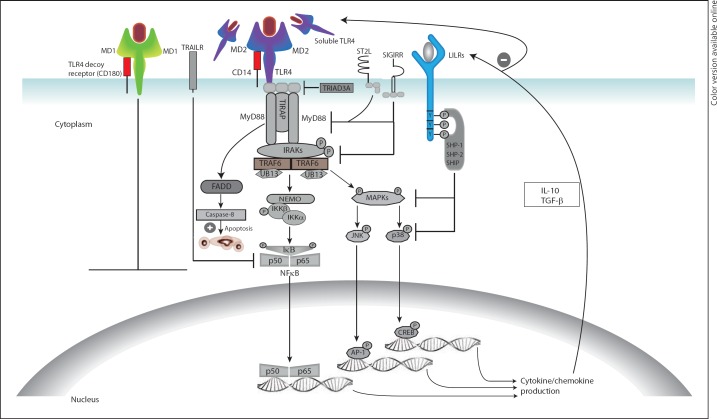Fig. 4.
Negative regulation of innate immune responses by down-regulation of membrane receptors, induction of soluble receptors, up-regulation of decoy receptors, activation of transmembrane inhibitory molecules and/or by induction of apoptotic signals. TLR signalling can be controlled by reducing surface receptor expression through E3 ubiquitin ligase (TRIAD3A)-mediated ubiquitination and degradation or inhibition of expression by anti-inflammatory cytokines. Soluble TLRs could compete with their membrane-bound counterparts for microbial ligands or interact with MD2 and/or CD14 co-receptors preventing the formation of functional MD2-TLR complexes. Up-regulation of TLR4 decoy receptor (CD180) and its co-receptor MD1 by pro-inflammatory mediators can induce negative regulation via competitive ligand binding. Another mechanism by which TLR signalling can be abrogated is by transmembrane inhibitory receptors such as TIR domain containing receptors [single Ig IL-1R-related molecule (SIGIRR) and ST2] and ITIM-containing receptors [LILRs and TNF-related apoptosis-inducing ligand receptor (TRAILR)]. Under certain circumstances, TLR ligation may cause recruitment of FAS-associated death domain (FADD) to MyD88 and trigger caspase-dependent apoptosis of hyper-activated cells.

